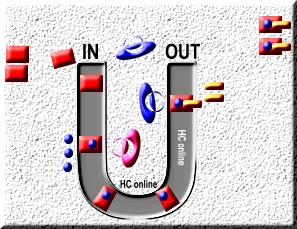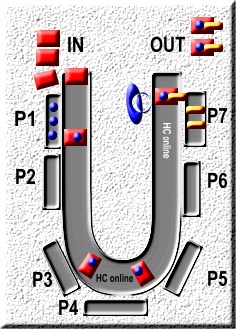
The layout of workcells in a U shape has several advantages:
The IN and OUT are close, allowing visual control and management, according to the production takt,
a single person can handle both the cell input feeding and output
The shortening of distances allow sharing of work, as well as reduction of transportation waste
These layouts provide convenient foundation for one piece flow
Communication among team mates in the cell is easier
The work is done inside the U, supplies remain outside
Usually machines and tables are on rollers (if possible) for quick reconfiguration
The floor space is generaly fewer with a U cell than stretched line
(including inventories and supplies), walk distances are also reduced, as they are Muda (waste).
Some tasks can be handled by few operators, going from one workstation to the next in the cell.
According to production takt and job contents, even a single person can manage all the work in the cell.

The cell can be made flexible if some station are dedicated to specific models or options:
Station vs models Matrix
| Standard | Deluxe |
| P1 | Yes | Yes |
| P2 | No | Yes |
| P3 | Y | Y, 2 per side |
| P4 | Y, Silver | Y, Gold |
| P5 | N | Y |
| P6 | Export only | No |
| P7 | Y | Y |

|
|
Author Chris HOHMANN is
manager and consultant in an international consulting firm.

 Contact Contact
|
CHAKU-CHAKU
Chaku-Chaku is a takt flow job consisting in loading/unloading parts from one machine to the next
according to a sequence the operator walks in the cell.
|
|



